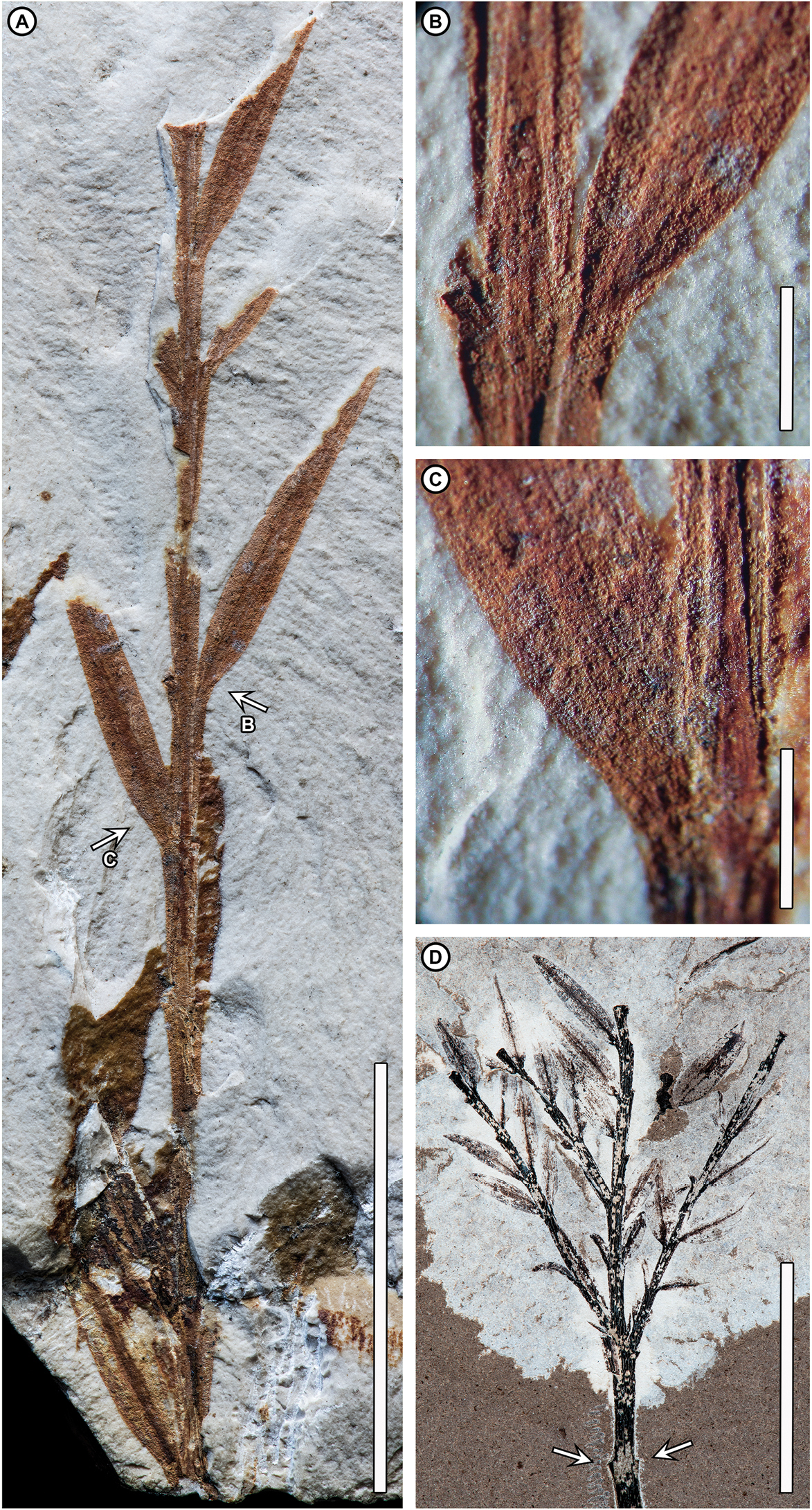
|
||
|
Retrophyllum oxyphyllum (Freng. & Parodi) Wilf, comb. nov. from Laguna del Hunco. A–C Holotype, MLP-4234, arrows in A indicate detail panels in B, C. D MPEF–Pb 8915a (Museo Paleontológico Egidio Feruglio, Trelew, Argentina) from Laguna del Hunco quarry LH6 of Wilf et al. (2003), part of an extensive suite of fossil Retrophyllum material here synonymized (Wilf et al. 2017b; Wilf 2017). A General view of the holotype, with clasping, overlapping, zigzagging, decurrent, opposite leaf bases; heterofacially twisted, lanceolate free-leaf portions, many of them broken off at departure from the twig and leaving stubs; and thick central tissue band compressed to a coalified black stripe, most conspicuous in the basalmost preserved leaf. Leaves on the left side of the twig in this view are twisted “forward” and those on the right “backward,” i.e., counterclockwise in both cases when viewed from leaf to twig; original abaxial or adaxial orientation cannot be determined B detail of backward-twisted leaf (at right), with negative relief (from compression) of the raised central band visible, and broken leaf base (at left) C detail of forward-twisted leaf, thickened central band, and dense longitudinal striations across the leaf surface marking borders between former stomatal rows D terminus of a long penultimate branch (also Wilf et al. 2017b: figs 10–12) with pairs of opposite, ultimate leafy branches, each similar to the holotype (A) with opposite leaves and linear-reduced leaves at the shoot bases (the holotype does not preserve the shoot base). Arrows indicate opposite branch scars on the exposed penultimate branch, completely unlike bamboo nodes. Scale bars: 2 cm (A, D); 2 mm (B, C). |